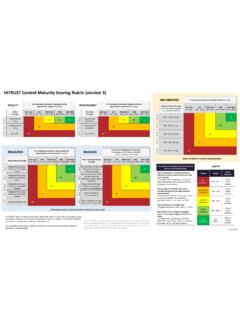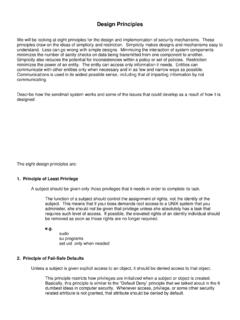Transcription of Surveillance Report - Centers for Disease Control and ...
1 Surveillance REPORTUNITED STATES 2016 / 2017 Traumatic Brain Injury-related Hospitalizations and Deaths by Age Group, Sex, and Mechanism of InjuryTBI Surveillance Report // UNITED STATES 2016 AND 2017 TBI Surveillance Report // UNITED STATES 2016 AND 20172 ACKNOWLEDGEMENTS This traumatic brain injury Surveillance Report was prepared by staff from the Division of Injury prevention (DIP), National center for Injury prevention and Control (NCIPC), Centers for Disease Control and prevention (CDC), Department of Health and Human Services, Atlanta, Georgia. Contributors to this Report included Alexis B.
2 Peterson, PhD1 Hong Zhou, MS, MPH2 Karen E. Thomas, MPH2 Jill Daugherty, PhD1 Corresponding Author Alexis B. Peterson, PhD1 This Report describes the incidence of traumatic brain injury (TBI) collected from multiple data sources. Data on TBI-related hospitalizations were obtained from the 2016 and 2017 Healthcare Cost and Utilization Project s National Inpatient Sample, sponsored by the Agency for Healthcare Research and Quality. Data on TBI deaths were obtained from the National Vital Statistics System s 2016 and 2017 multiple-cause-of-death files. All material in this Report may be used and copied without permission and with citation.
3 DISCLAIMER The findings and conclusions in this Report are those of the authors and do not necessarily represent the official position of the Centers for Disease Control and prevention . 1 Applied Science Branch, DIP, NCIPC, CDC 2 Data Analytics Branch, DIP, NCIPC, CDC SUGGESTED CITATION: Centers for Disease Control and prevention (2021). Surveillance Report of Traumatic Brain Injury-related Hospitalizations and Deaths by Age Group, Sex, and Mechanism of Injury United States, 2016 and 2017. Centers for Disease Control and prevention , Department of Health and Human Services. TBI Surveillance Report // UNITED STATES 2016 AND 2017 EXECUTIVE SUMMARY Traumatic brain injury (TBI) is a head injury caused by an external force to the head or body resulting in disruption of normal brain TBI is preventable.
4 However, it results in death and disability for thousands of people each year and remains a serious public health concern. In the United States TBIs were diagnosed in nearly million emergency department visits, hospitalizations, and deaths that occurred during This Surveillance Report describes 2016 and 2017 national incidence estimates of TBI-related hospitalizations and deaths by age group, principal mechanism of injury, injury intent, and sex.* Estimates of TBI-related hospitalizations were calculated from the Healthcare Cost and Utilization Project s (HCUP) National Inpatient Sample (NIS).^ HCUP serves as a resource of encounter-level health care data derived from a suite of state-based administrative health care record TBI deaths were assessed from the National Vital Statistics System (NVSS),^ which captures data for all deaths registered in all 50 states and the District of This TBI Surveillance Report is an update to the Centers for Disease Control and prevention s (CDC s)
5 Last TBI Surveillance Report published in 2019 that described estimates of TBI-related hospitalizations and deaths for the 2014 data Key Findings TBI-RELATED HOSPITALIZATIONS Approximately 227,000 TBI-related hospitalizations occurred in 2016 but counts decreased to almost 224,000 in 2017. Children ages 0-17 years accounted for approximately of all TBI-related hospitalizations in 2016 and in 2017. Unintentional falls and motor vehicle crashes were the most common mechanisms of injury contributing to a TBI-related hospitalization. Unintentional falls accounted for (2016) and (2017; weighted estimate) of all TBI-related hospitalizations.
6 Motor vehicle crashes accounted for (2016) and , (2017) of all TBI-related hospitalizations. Rates of TBI-related hospitalizations per 100,000 population were highest among the following groups: adults aged 75 years ( in 2016 and in 2017); those aged 65-74 years ( in 2016 and in 2017); and individuals aged 55-64 years ( in 2016 and ). In 2016 males had significantly higher age-adjusted rates compared with females among the major unintentional and intentional principal mechanisms of injury that contributed to a TBI-related hospitalization. Specifically, males had higher age-adjusted rates of: unintentional falls ( versus ); motor vehicle crashes ( versus ; twofold higher); unintentionally being struck by or against an object ( versus ; twofold higher), intentional self-harm ( versus ; twofold higher), and assault ( versus ; more than fourfold higher).
7 *Note: Identification and classification of TBI morbidity and mortality are described in the Methodological Appendix. ^Note: Data sources analyzed for TBI morbidity and mortality and data exclusions are described in the Methods section. 3 TBI Surveillance Report // UNITED STATES 2016 AND 20174 In 2017 males had significantly higher age-adjusted rates compared with females among the major unintentional and intentional principal mechanisms of injury that contributed to a TBI-related hospitalization. Specifically, males had higher age-adjusted rates of: unintentional falls ( versus ); motor vehicle crashes ( versus ; twofold higher); unintentionally being struck by or against an object ( versus ; more than twofold higher); intentional self-harm ( versus ; more than twofold higher); and assault ( versus ; more than fourfold).
8 The most common principal mechanisms of injury for TBI-related hospitalizations among children aged 0-17 years were falls (rate of in 2016 and in 2017) and motor vehicle crashes ( in 2016 and in 2017). TBI-RELATED DEATHS Approximately 60,000 TBI-related deaths occurred in 2016, and deaths increased to over 61,000 in 2017. Children ages 0-17 years accounted for approximately of all TBI-related deaths in both years. Suicide and unintentional falls were the most common mechanisms of injury contributing to a TBI-related death. Suicide accounted for of all TBI-related deaths in 2016 and in 2017.
9 Unintentional falls accounted for approximately 28% of all TBI-related deaths in both years. Rates of TBI-related deaths per 100,000 population were highest among adults aged 75 years ( in 2016 and in 2017), those aged 65-74 years ( in 2016 and in 2017), and individuals aged 55-64 years ( in 2016 and in 2017). In 2016, males had significantly higher age-adjusted rates compared with females among the major unintentional and intentional principal mechanisms of injury that contributed to a TBI-related death. Specifically, males had higher age-adjusted rates of: unintentional falls ( versus ); motor vehicle crashes ( versus ; more than twofold higher); suicide ( versus ; more than sixfold higher); and homicide ( versus ; more than twofold higher).
10 In 2017, males had significantly higher age-adjusted rates compared with females among the major unintentional and intentional principal mechanisms of injury that contributed to a TBI-related death. Specifically, males had higher age-adjusted rates of: unintentional falls ( versus ); motor vehicle crashes ( versus ; more than twofold higher); suicide ( versus ; more than sixfold higher); and homicide ( versus ; more than twofold higher). TBI Surveillance Report // UNITED STATES 2016 AND 2017 Limitations The analysis presented in this Surveillance Report did not differentiate by injury severity, although some codes included in the CDC s TBI Surveillance definition are indicative of a more severe injury.

















